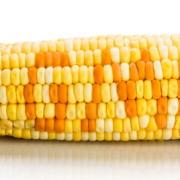Submission to the EPA on the use of ethanedinitrile (EDN) as a fumigant
Submission to the EPA on the use of ethanedinitrile (EDN) as a fumigant
Introduction
1. The Soil & Health Association of New Zealand Inc. (“Soil & Health”) is a charitable society
registered under the Incorporated Societies Act 1908. It is the largest membership
organization supporting organic food and farming in New Zealand and is one of the
oldest organic organisations in the world, established in 1941. Soil & Health’s objectives
are to promote sustainable organic agricultural practices and the principles of good
health based on sound nutrition and the maxim: “Healthy soil, healthy food, healthy
people”. Its membership is chiefly composed of home gardeners and consumers,
organic farmers and growers, secondary producers, retailers and restaurateurs. Soil &
Health publishes the bi-monthly ‘Organic NZ’ magazine – New Zealand’s leading
organics magazine.
2. Soil & Health makes this submission on the application to import ethanedinitrile (EDN),
a fumigant for use on timber/logs under commercial conditions, requesting that the
application be declined.
3. Soil & Health submitted to the Environmental Risk Management Authority (ERMA) for
the reassessment of methyl bromide and has campaigned to have that fumigant better
contained and recaptured or stopped. Our then spokesperson Steffan Browning, has
later in another role as a Section 274 Party, won an Environment Court case Envirofume
Limited vs Bay of Plenty Regional Council [2017] NZEnv 12. That case, contested for the
applicant Envirofume by legal counsel Helen Atkins (Chairperson of the 2010 ERMA
methyl bromide re-assessment), exposed significant risks of methyl bromide
fumigations for the health and safety of workers and nearby communities. We consider
that due to its known toxicity EDN would be no better for those people potentially
exposed, both at the fumigation workplace and further away.
Detailed submission
4. Safeguards to protect people and the environment are becoming more important and
need greater attention as increasing development and the presence of toxins and
fumigants in the environment become more common.
5. We are aware that EDN is promoted as a ‘new’ fumigant showing great potential as a
replacement for the ozone-depleting fumigant methyl bromide, and that an extensive
review of scientific literature commissioned by Stakeholders in Methyl Bromide
Reduction (STIMBR) in 2014 found EDN was the only potential fumigant alternative to
methyl bromide as a phytosanitary treatment for forest products. Research conducted
by Plant and Food Research has also confirmed that EDN is an effective phytosanitary
treatment for insects associated with New Zealand forest products.
6. In Australia, EDN can ONLY be used with scrubbing (a recapture) technology as part of
its label use after being assessed by the national regulatory body Australian Pesticides
and Veterinary Medicines Authority (APVMA). It is our understanding however that
Draslovka are trying to register the product in New Zealand, without liquid scrubbing or
another recapture method.
7. Attached to this submission is the public release summary from the APVMA on the
evaluation of EDN. Refer to page 26, under critical comments: “Residual gas must be
scrubbed for a minimum of 4 hours using a liquid scrubbing system at the completion of
the fumigation period, followed by a further 24 hours of ventilation prior to clearance.”
8. EDN is not ozone depleting, unlike methyl bromide. Regardless, if this application for
EDN importation and use is granted, EDN will still need containment and recapture, like
any of these noxious gases, rather than being released into the wider environment.
9. EDN, just as with methyl bromide, will be a risk well beyond fumigation areas due to
drift, inversion layers, and the inability for its whereabouts to be adequately monitored
by those responsible. Boundary monitoring is ineffective if at head height, when a
fumigant plume passes above it and then descends or drifts into other areas.
10. EDN is highly toxic and fumigation workers may be exposed to the highly toxic product
just as with methyl bromide when: • opening fumigant cylinder valves, • removing tarp covers for ventilation, • opening and entering shipping containers, • leakage from damaged (leaking) fumigant delivery lines, or when handling
fumigated timber.
11. Other port workers, not involved in fumigation but working nearby, may also be
exposed to the EDN, particularly when the EDN is released into the atmosphere
following fumigation, but also during accidental and spontaneous release, as happens
with methyl bromide most years, at most log stack fumigating ports. Log stack
fumigations under tarpaulins are subject to strong wind events and accidental tarpaulin
puncturing. Both Genera and Envirofume fumigation operators have had log stack
tarpaulins rent, resulting in the spontaneous release of methyl bromide.
12. In the Environment Court decision Envirofume Limited vs Bay of Plenty Regional Council
[2017] NZEnv 12, the court observed the large range of port users who may be exposed
inadvertently to the methyl bromide fumigant. EDN will have the same risks of
exposure for workers and passersby.
13. That Court found significant shortcomings in the current methyl bromide fumigations.
EPA and Work Safe requirements are either impractical or are frequently breached.
14. EDN gives no better assurance of safety than methyl bromide.
15. Whatever toxic fumigant is used for log, timber and other fumigations, it must be in a
dedicated facility with recapture of remnant fumigant, such as is used at Port Nelson.
Methyl bromide was linked at that port with the deaths of six men from motor neurone
disease. EDN has its own array of serious health risks. Recapture technology exists but
industry individually and collectively has mostly avoided its use for economic reasons.
16. Responsibility for dedicated containment and recapture facilities was considered by the
Court to require an integrated approach:
[130] Overall, our view is that this matter requires an integrated approach from
the Port of Tauranga, the marshalling/stevedoring companies, the forestry
industry and the fumigators to adopt an approach for the safe application of
methyl bromide and the recapture of all reasonable emissions. This would
probably require a dedicated area for fumigation, and may involve a building or
other system that seeks to encapsulate and recapture gas. We are not satisfied
that the introduction of another company into the Tauranga market is going to
bring about those changes. In our view, the advance towards reduction of
emissions has seen little progress since the 1990s, and the Court is surprised to
see that there is approximately ten times as much methyl bromide being applied
in Tauranga as there was in the 1990s.
17. The ERMA 2010 methyl bromide reassessment inappropriately, and possibly illegally, set
a very late 2020 date for recapture of that fumigant to meet Montreal Protocol
requirements of phasing out methyl bromide emissions. Should the application for EDN
use be granted, the EPA must insist on dedicated fumigation facilities and recapture
always, if the EPA is to meet its statutory requirements.
Conclusions
18. Soil & Health seek that the application be declined.
19. Should the application be granted, dedicated fumigation facilities and recapture must be
required.
20. Soil & Health wish to be heard in support of our submission.
Yours sincerely
Name: Mischa Davis
Position: Policy Advisor
The Soil & Health Association PO Box 9693 Marion Square Wellington, 6141 Email: advocacy@organicnz.org.nz Website: www.organicnz.org.nz





